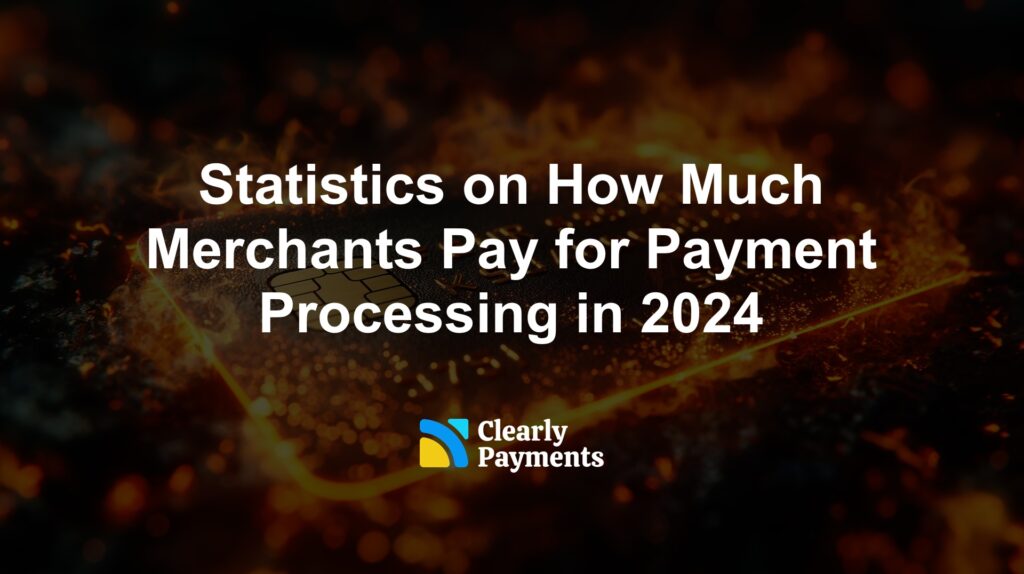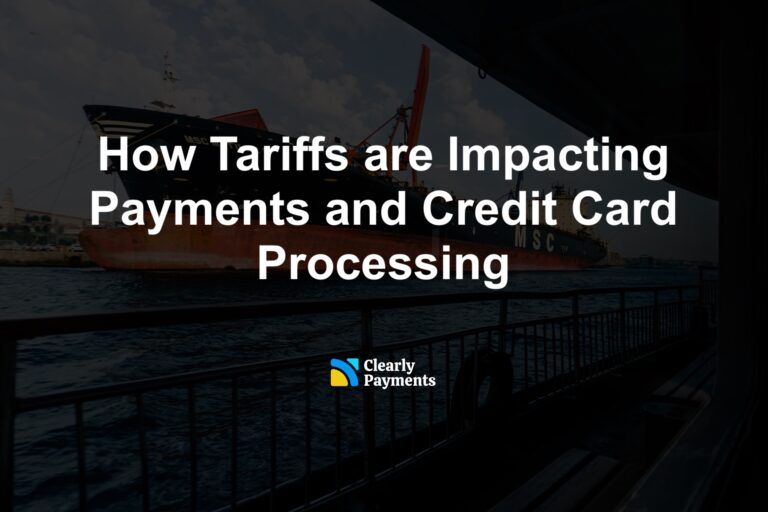In 2024, payment processing is more complex and competitive than ever. With the global economy’s increasing digitization, the demand for efficient, cost-effective payment processing solutions has surged.
Merchants and corporations are always in search of low cost processing across all industries and regions. This article covers current statistics and general information of payment processing across the globe for merchants.
Payment Process Fees Differ by Region
The global overall average fee for processing credit card transactions in 2024 is approximately 2.4% of the transaction value. This rate, however, varies significantly depending on the region, payment method, and type of transaction.
For more in depth information, read the report on interchange fees for payment processing by country.
North America Payment Processing Fees
Merchants in the United States and Canada face some of the highest payment processing fees in the world, with average rates ranging between 2.3% and 2.9%. These fees are attributed to the dominance of credit card payments and the involvement of multiple intermediaries, including card networks, issuing banks, and acquiring banks.
North American payment processing fees are the highest in the world due to a combination of factors, including high interchange rates, which can exceed 2% per transaction, and the dominance of major card networks like Visa and Mastercard that control over 80% of the market. Unlike Europe, where interchange fees are capped at 0.3% for credit cards, the U.S. has no such regulation, allowing fees to remain elevated. Additionally, the prevalence of rewards programs, funded by these fees, and the high usage of credit cards—over 60% of U.S. consumers prefer credit cards—further drive costs. The complex payment ecosystem and a lack of merchant bargaining power contribute to maintaining these high fees.
Europe Payment Processing Fees
European merchants benefit from lower fees, typically around 0.5% to 1.5% for a total cost to merchants. The European Union’s regulations, such as the Interchange Fee Regulation (IFR), have capped interchange fees, resulting in more competitive pricing for merchants.
Due to the EU’s Interchange Fee Regulation, which caps interchange fees at 0.3% for credit cards and 0.2% for debit cards, European merchants generally benefit from lower fees compared to other regions, especially North America. However, additional costs such as acquiring bank fees, payment gateway fees, and cross-border transaction fees can influence the final amount a merchant pays.
Asia-Pacific Payment Processing Fees
In the Asia-Pacific region, the average payment processing fee a merchant pays generally ranges from 1% to 3% of the transaction amount. This range can vary widely depending on the country, the type of payment method used, and the specific agreements between merchants and payment processors.
In countries like Japan and Australia, fees tend to be on the lower end, often around 1% to 1.5%, due to competitive markets and regulatory influences. In contrast, emerging markets within the region may see higher fees, closer to 2% to 3%, particularly for credit card transactions.
Additionally, the use of alternative payment methods like mobile wallets (e.g., Alipay, WeChat Pay) and bank transfers is prevalent, which can sometimes result in lower fees compared to traditional card payments. The diversity of payment methods and varying levels of market maturity across the region contribute to this broad range in processing fees.
Latin America Payment Processing Fees
In Latin America, the average payment processing fee that a merchant pays typically ranges from 2% to 4% of the transaction amount, with fees varying significantly depending on the country, the type of card used, and the payment processor.
Credit card transactions generally incur higher fees, often closer to 3% to 4%, particularly in countries like Brazil and Argentina, where the market is dominated by a few major banks and payment processors. Debit card fees tend to be lower, but they still average around 1.5% to 2.5%.
The region’s financial infrastructure is less developed compared to North America and Europe, leading to higher fees due to limited competition and higher risk factors. Additionally, the growing use of alternative payment methods, such as local digital wallets (e.g., MercadoPago, PagSeguro), is beginning to influence the fee structure, though traditional card payments still dominate.
Breakdown of Payment Processing Fees
Payment processing fees can be broken down into three main components:
Interchange Fees: Interchange fees, set by card networks (e.g., Visa, Mastercard), are paid by the merchant’s bank (acquirer) to the cardholder’s bank (issuer). In 2024, interchange fees range from 0.5% to 2.5% of the transaction value, depending on factors such as card type, transaction type, and merchant category.
Assessment Fees: Card networks also charge assessment fees to acquirers, typically around 0.13% to 0.15% of the transaction value. These fees are used to cover the cost of maintaining the card network’s infrastructure.
Processor Fees: Payment processors charge merchants a fee for their services, which can vary from 0.2% to 1.0% of the transaction value. This fee covers the cost of authorization, fraud prevention, and settlement services.
Impact of Merchant Size on Fees
The size of the merchant plays a significant role in determining payment processing fees. Larger merchants, with higher transaction volumes, have more negotiating power and can often secure lower rates.
Small Businesses: Small businesses, processing less than $1 million annually, typically pay higher fees, ranging from 2.5% to 3.5% per transaction. They often lack the resources to negotiate better rates or invest in advanced payment processing technology.
Mid-sized Merchants: Mid-sized merchants, processing between $1 million and $10 million annually, usually pay between 2.0% and 2.7% per transaction. Their higher transaction volumes give them some leverage to negotiate lower fees and access to more competitive payment processing solutions.
Large Enterprises: Large enterprises, processing over $10 million annually, benefit from the lowest fees, often between 1.5% and 2.0% per transaction. These merchants can negotiate good pricing arrangements with payment processors, reducing their overall costs. Large enterprises even have discussions directly with credit card networks like Visa and MasterCard to negotiate lower fees.
The Different Types of Payment Methods
The type of payment method used by customers also impacts the fees that merchants pay:
Credit Cards: Credit card transactions incur the highest fees, typically between 2.0% and 3.5%. Rewards cards and corporate cards often have higher interchange fees, increasing the overall cost for merchants. There is an overview on the fees for different credit cards and the most expensive ones.
Debit Cards: Debit card transactions generally have lower fees, ranging from 0.5% to 2.0%. In regions like the U.S., PIN debit transactions are less expensive than signature debit transactions.
Alternative Payment Methods: The rise of digital wallets (e.g., Apple Pay, Google Pay), Buy Now, Pay Later (BNPL) services, and bank transfers has provided merchants with lower-cost alternatives. Fees for these methods usually range from 1.0% to 2.0% per transaction.
Industry-Specific Payment Processing Costs
Retail: Retailers typically pay between 2.0% and 2.5% per transaction. High transaction volumes allow for some fee negotiation, but the use of rewards credit cards by customers can drive up costs.
E-commerce: E-commerce merchants face higher fees, averaging 2.5% to 3.0%. The increased risk of fraud and chargebacks in online transactions contributes to these higher fees.
Hospitality: Hotels and restaurants usually pay around 2.0% to 2.8% per transaction. The hospitality industry’s reliance on credit card payments, combined with the need for tip adjustments and delayed settlements, increases the complexity and cost of processing.
Healthcare: Healthcare providers face lower fees, typically between 1.5% and 2.2%. The industry’s lower risk profile and the frequent use of debit cards for copayments help keep fees down.
Trends for Payment Processing Fees in 2024
- Regulatory Changes: Governments worldwide are implementing regulations to cap interchange fees and increase transparency in payment processing. For example, the European Union’s IFR and similar initiatives in other regions aim to reduce the cost burden on merchants.
- Advances in Technology: The adoption of new payment technologies, such as real-time payments (RTP) and blockchain, is driving down processing fees. These technologies reduce the need for intermediaries, streamline transaction processing, and lower the risk of fraud.
- Increased Competition: The rise of fintech companies offering innovative payment processing solutions has increased competition in the industry. This competition has pressured traditional payment processors to lower their fees to retain market share.




